W
“In revenge and in love woman is more barbaric than man is”
Friedrich Nietzsche - Beyond Good and Evil
Première: 25 January 2019
Opening CaDance Festival 2019
Tour: February - May 2019
Dancers: Camilla Montesi, Xanthe van Opstal, Aya Misaki, Sammie Hermans, Alice de Maio
Light Design: Pavla Beranova
Assistant to the Choreographer: Quentin Roger
Sound and Costume Design : Samir Calixto
Scenography: Samir Calixto & Pavla Beranova
Costumière: Jorrien Schoneveld
W is a co-production of Korzo Producties & Scenario Pubblico (IT)
© Eyjólfur Eyjólfsson
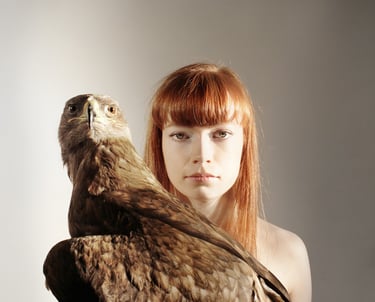





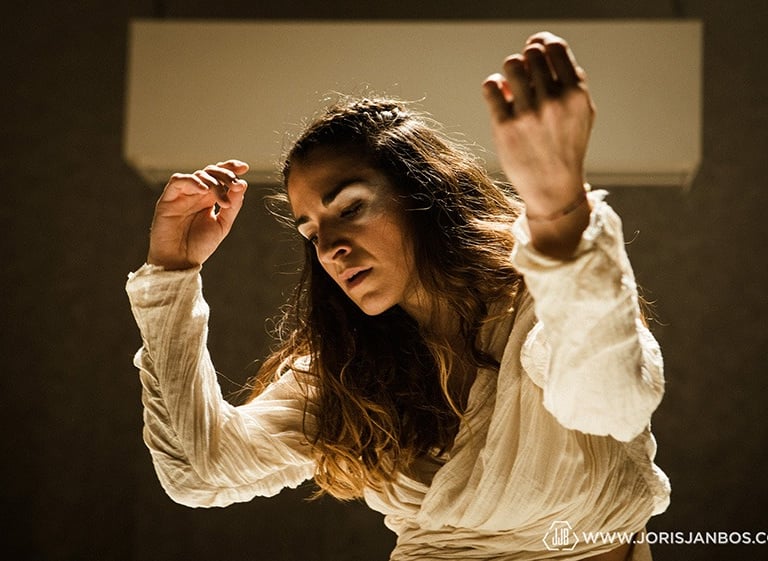

© Eyjólfur Eyjólfsson
© Joris-Jan Bos
W
With W choreographer Samir Calixto continues exploring the intersection between philosophy and dance, initiated by his previous piece M – a bold take on Nietzsche’s insights framed by the music of Gustav Mahler – which presented five men on stage traversing an unforgiving physical journey towards self abandon.
In this new performance, female gender takes centre stage as a representation of the strength, fury and passion often present in ancient female myths and archetypes, so often associated to women’s intrinsic attitude of abandon to a full spectrum of emotions.
Framed by the sonorities of Richard Wagner’s Tristan und Isolde – an iconic and polemic work about the extremes of human instinct triggered by the irrationality of romantic love -as well as the controversial explorations of Nietzsche on the female gender, the piece will bring five women on stage, all engaged in an intense ritual of surrender, carnality and sacrifice, until purity of existence is finally reached.
Creating again a hybrid in which dance, light, philosophy and sound establish an intricate yet subtle inter-relationship, Calixto brings with W an obsessive quest for truth from the perspective of women who, through the intensity of dance and the choreographer’s relentless physicality, will unveil their fragility as well as their divine brutality. A provocative exploration in times when the concept of femininity suffers a radical - yet necessary - change.
ABOUT THE PERFORMANCE
Mr Calixto’s Summa was one of the best things I saw last year and I can confidently say that, even though it’s only the middle of January, W may well be the very best performance I see this year. It’ll certainly be a hard act to follow. Brilliant, totally brilliant.




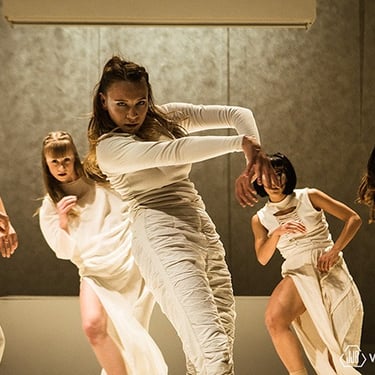
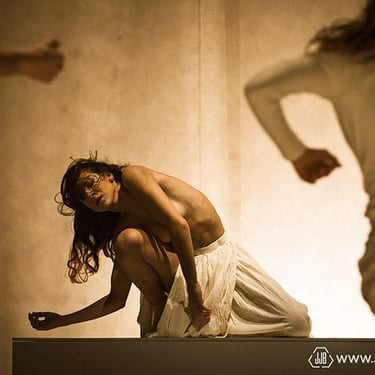
© Peter Janssen/ Krachtigkaal

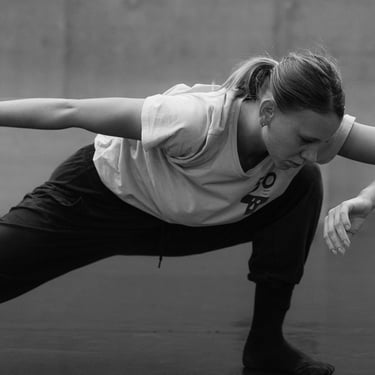
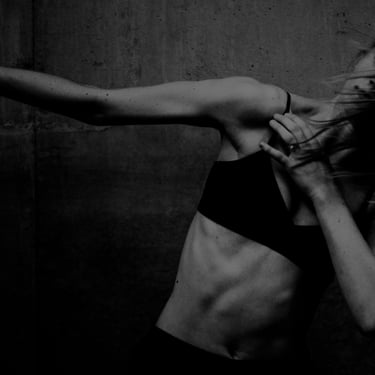
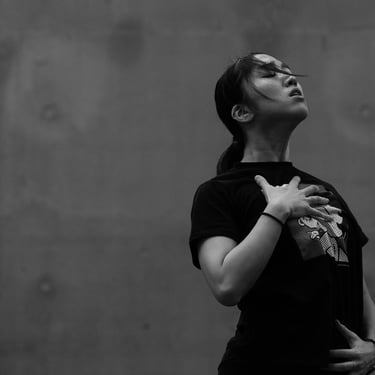

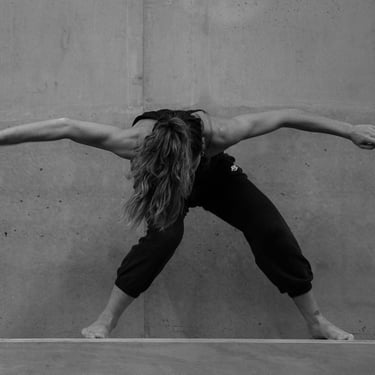
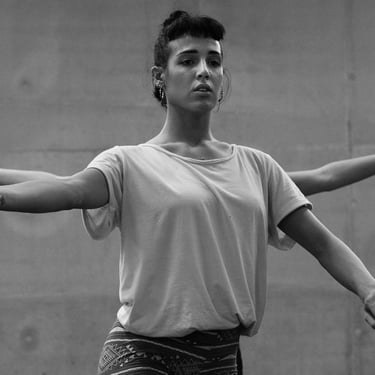
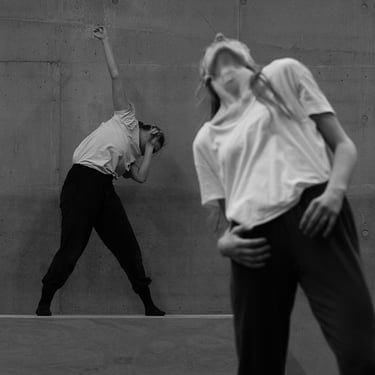
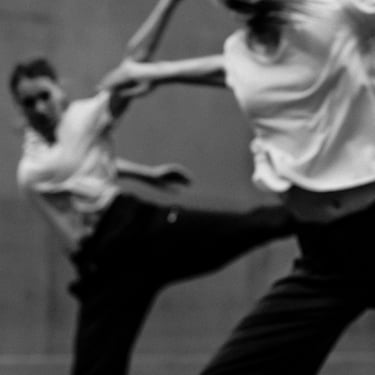
© Joris-Jan Bos





‘W’: Women, Wagner… and all the (im)possible W’s.
Program text by Samir Calixto
It was while conceiving 'M" a few years ago that this new work - ‘W’- found its genesis. Originally a complementary counterpart to the first piece, this latest one was created as another work over human transcendence through physicality, inspired by some of the philosophical insights of Friedrich Nietzsche – such as the unlocking of the wisdom inherent to our bodies, the dissolution from every dogma and the complementary principles of the Apollonian and the Dionysian – in conjugation with musical frames which reflect these ideas. Nevertheless, while in ‘M’ such themes were represented by the struggle against the bonds of rationality so connected to the masculine essence, ‘W’ looks at the feminine principles of existence in an attempt to touch their mysterious depth.
It was during a residency a few months ago in Catania, the pulsating Sicilian city on the foothills of Etna, that this performance firmed its foundation. Etna – the most active volcano in Europe – is an undeniable presence in the local's lives, and it is known by them as ‘La Donna’ (The Woman): an example of how some primordial aspects of nature are often seen as a feminine force. There we interviewed some local women who have a special connection to the volcano. While some have a pragmatic relationship with it, others have a more physical or a deeply spiritual one. For example, in this encounter, we met women who developed a series of rituals that connect their personal experiences to the cycles of the volcano.
Coming from a cultural background in which women are strongly connected to the ‘invisible’ - call it spirituality or merely intuition – it is inevitable for me to not look at the feminine as a force which wisely surpasses rationality in their relationship to life. It touches everything which cannot be explained, purposely holding together the inexplicable experiences of life by reaffirming that its mystery is there to be experienced and not to be explained. As a dance maker, it is reaffirming to re-encounter this idea, as it gives back to the physical experience the potential to solve – or not - the riddle of what can the body convey beyond its immediate functions or, in the case of dance, beyond form.
In my contacts with the feminine – not only regarding women but also the female aspects of nature – the opposites never null each other, because they often bypass the judgment of the mind and its categorizations. The world of emotions, intuitions and vibrations intertwine in a constant experience of extremes: suppressing and elevating, loving and hating, destroying and regenerating. Like Etna, which at every eruption devastates and at the same time fertilizes, the feminine has been represented since the beginning of time as a far more complex manifestation of life than the patriarchal world of logic, so predominant in our lives up to this day. This force, as opposed to the binary notions of the mind so associated with the masculine principles, is more fluid as it embraces a larger spectrum of existence. Just by looking at Mythology and its archetypes we can find multiple examples. Nietzsche knew that (despite the erroneous tendency to interpret some of his quotes as misogynous once taken out of context), and so did Wagner – who explored it so profoundly in his groundbreaking work ‘Tristan und Isolde’, from which echoes can be heard tonight in this performance. It is also in this opera that the overwhelming capacity of love, ranging from the sensual to the sublime, leads to transcendence. It is through the feminine essence embodied by Isolde and her overflowing passion that this path is manifested, leading to the famous Liebestod (translated by some as ‘Death in Love’): a metaphor of ultimate abandon and surrender, and the unconditional capacity to sacrifice as a sign of strength - not as mere devotion towards a single human being, but as a display of the feminine infinite capacity to love deeply and to bind all things together.
Finally, as its initial concept precedes the current and highly relevant discussions around gender equality and female empowerment, it is important to state that ‘W’ proposes a look beyond the idea of differentiation between genders. It comes as a small contribution to a very ancient, essential need to look at what is ‘human, all too human’ about ourselves: our lust to live, to love, to transform and ultimately to transcend the limitations of our own flesh to embrace the full spectrum of our living experiences.
Once again, Evoe Bacchus… and Kyria Demetra!
May the eternal feminine descend over us tonight.
